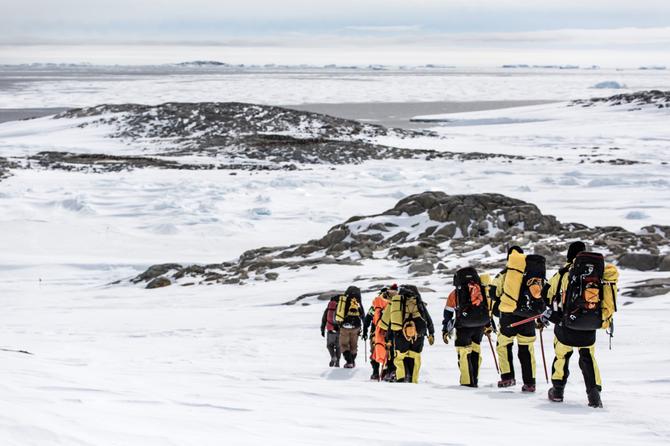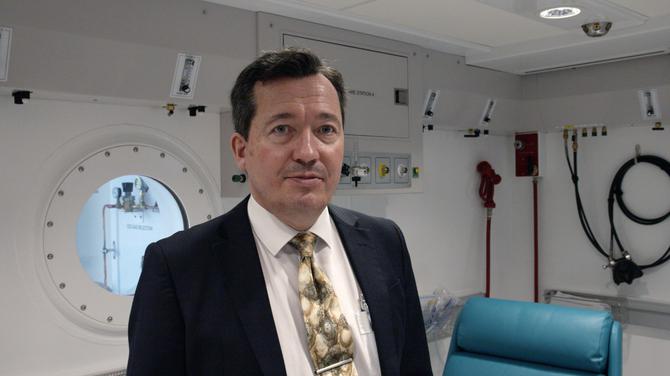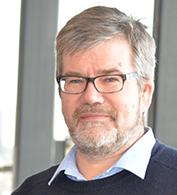As the yearning to further explore the galaxy remains high, the demand for space medicine to better understand human health, nurtition and performance in space continues to grow with Tasmania positioning itself to lead the field nationally.
The University of Tasmania has been active in space medicine research with an expert team working in close relationship with the National Aeronautics and Space Administration (NASA), through its partnership with the Australian Antarctic Division (AAD), since 2014.
With Antarctic remoteness and extreme conditions considered the perfect testing grounds for space medicine, Tasmania’s position as the Antarctic gateway and the University’s Antarctic research expertise creates a unique opportunity in the field.
University of Tasmania clinical psychologist Professor Kimberley Norris, who has a wealth of research experience with Antarctic workers, said the connection provided the perfect model for space medicine research.
“Due to its extreme physical, technological, psychological and social parameters, Antarctica is considered a ‘natural laboratory’ for human behaviour in extreme environments and a space analogue,” she said.
“With impending increases to space exploration and colonisation of other planets, research in such environments that can inform how best to support the health, wellbeing and performance of those undertaking space travel and employment is essential.”
Click here to find out more about studying in remote and extreme environments.
“With impending increases to space exploration and colonisation of other planets, research in such environments that can inform how best to support the health, wellbeing and performance of those undertaking space travel and employment is essential.”
Past research undertaken in Antarctica with Australian Antarctic expeditioners - including that relating to group dynamics, virus reactivation, Vitamin D, sleep and environmental design - has already been successfully applied to space contexts and informed improvements in strategies across multiple space agencies including NASA and the European Space Agency (ESA).

Antarctica is considered a space analogue. Image credit: © Dominic Hall/Australian Antarctic Division
A partner of the Centre for Antarctic, Remote and Maritine Medicine (CARMM), an Australian and Tasmanian Government supported expert network based at the AAD, the University offers a ‘Humans in Space’ educational unit through the Tasmanian School of Medicine - the first offering of its kind in the southern hemisphere.
The unit is part of the Healthcare in Remote and Extreme Environments (HREE) program and is run in collaboration with the Australasian Society of Aerospace Medicine (ASAM) and the AAD.
Focusing on the environmental challenges and technological countermeasures for survival in space from a medical perspective, the course will soon also be available more broadly to the community in the form of a Massive Open Online Course (MOOC).
The University was also a partner in the recent funding of a new $11 million hyperbaric/hypobaric chamber at the Royal Hobart Hospital, which is unique in the southern hemisphere and one of only a small number globally with the dual-capacity to simulate both sub-aquatic and high-altitude environments.
With the capability to decrease air pressure, the hypobaric functionality allows the chamber to reproduce conditions close to that on the surface of Mars creating huge research potential.
The chamber, for example, can be used to test a range of equipment in an atmosphere similar to that of space and to explore how to reduce the amount of time it takes for astronauts to adjust to space-suit air pressure outside their spacecraft- which currently can require 24 hours in an airlock chamber.

Associate Professor David Cooper, Tasmanian School of Medicine/RHH) , in the hypobaric chamber which can mimic conditions close to the surface of Mars
The Head of the Tasmanian School of Medicine at the University of Tasmania, Professor James Vickers, said the prospects from the current developments and collaborations in space medicine were broad and will support Tasmania to contribute to Australia’s space economy, which is set to triple by 2030 to $12 billion. The Australian Space Agency (ASA) has shown its support for Tasmania’s leadership role in remote and space medicine through a Memorandum of Understanding between the ASA and the Tasmanian State Government, signed in 2019.
“The unique collaboration between UTAS and the AAD, formalised through CARMM, ensures that we are able to plan and provide interventions to support optimal space travel outcomes for Australia and global best practice guidelines in space medicine,” Professor Vickers said.
“And any gains made in space medicine, particularly in preventive and telemedicine, will have broad applications on Earth to help address a spectrum of major health issues.”
Banner image credit: NASA
